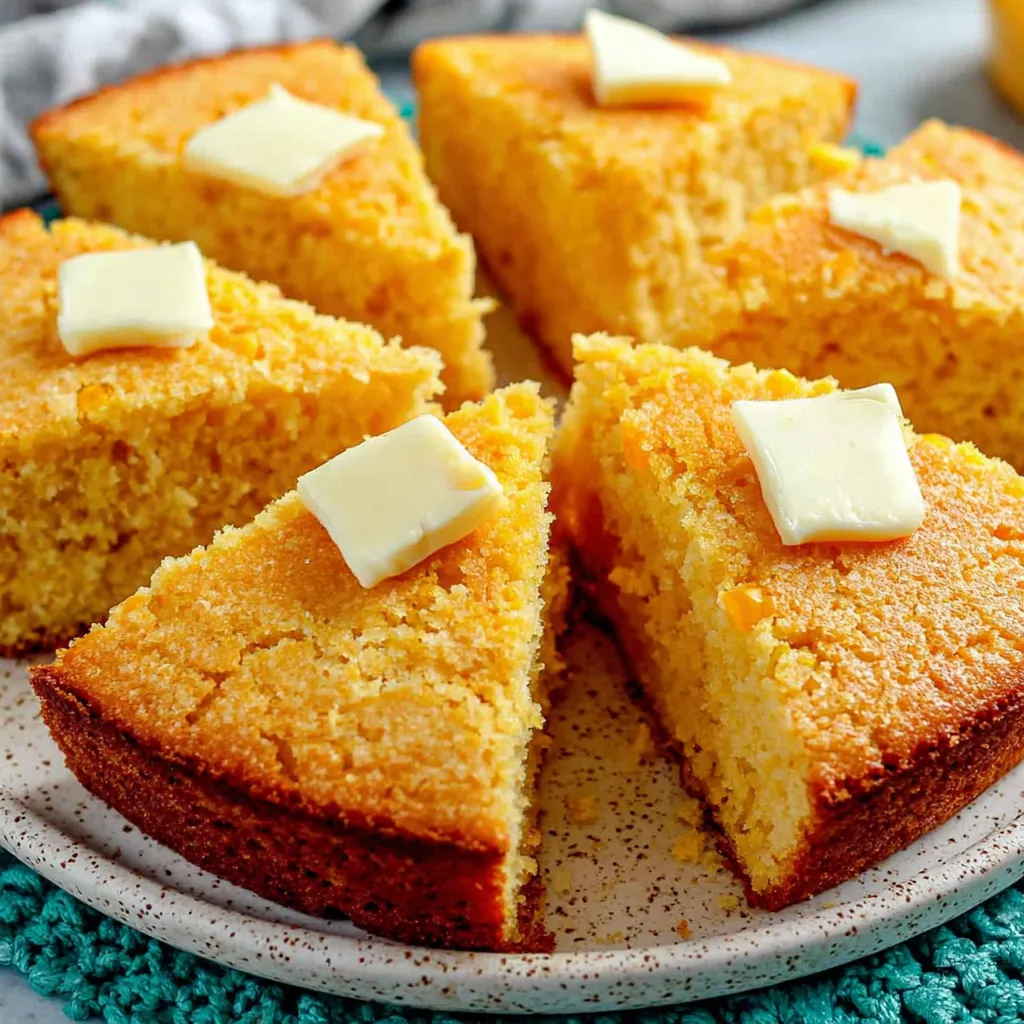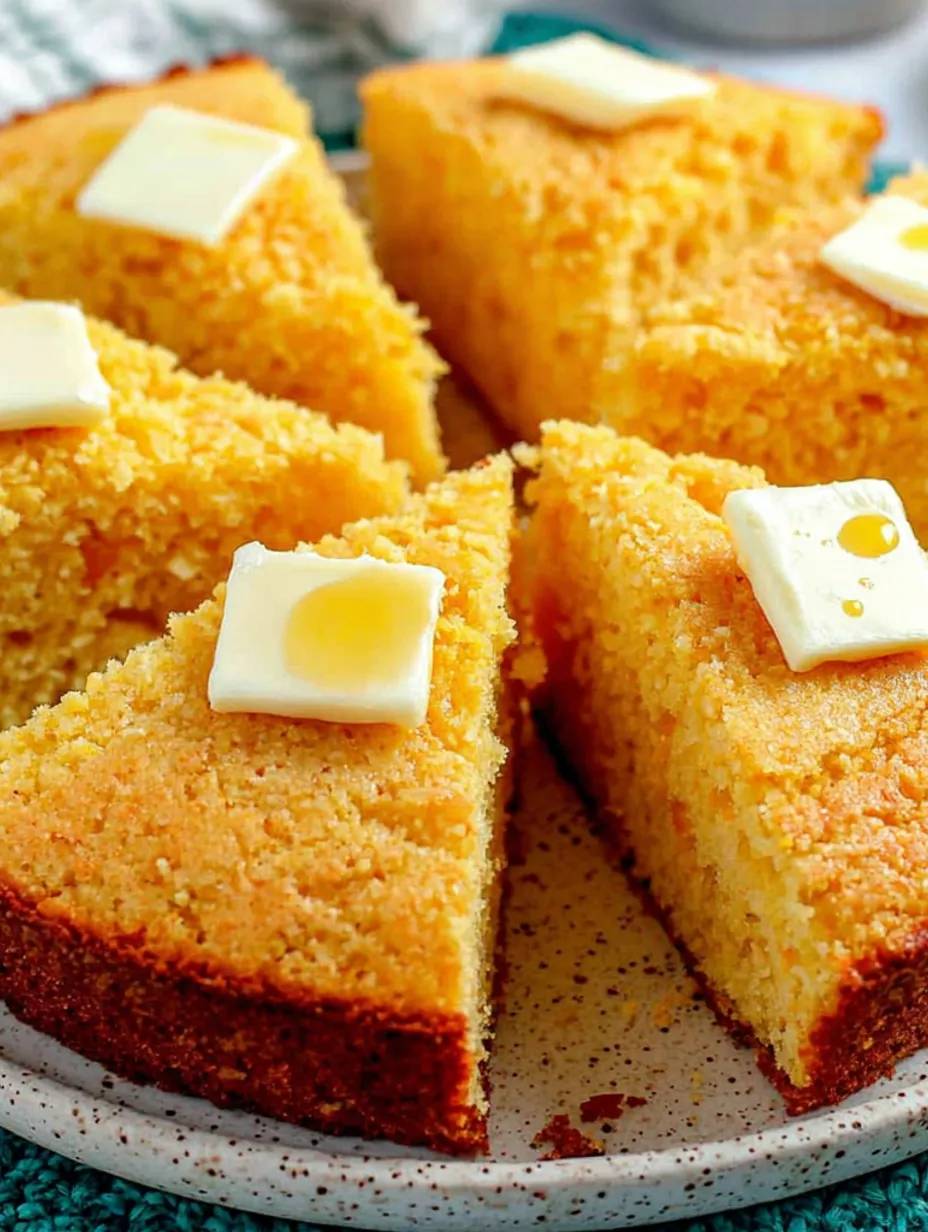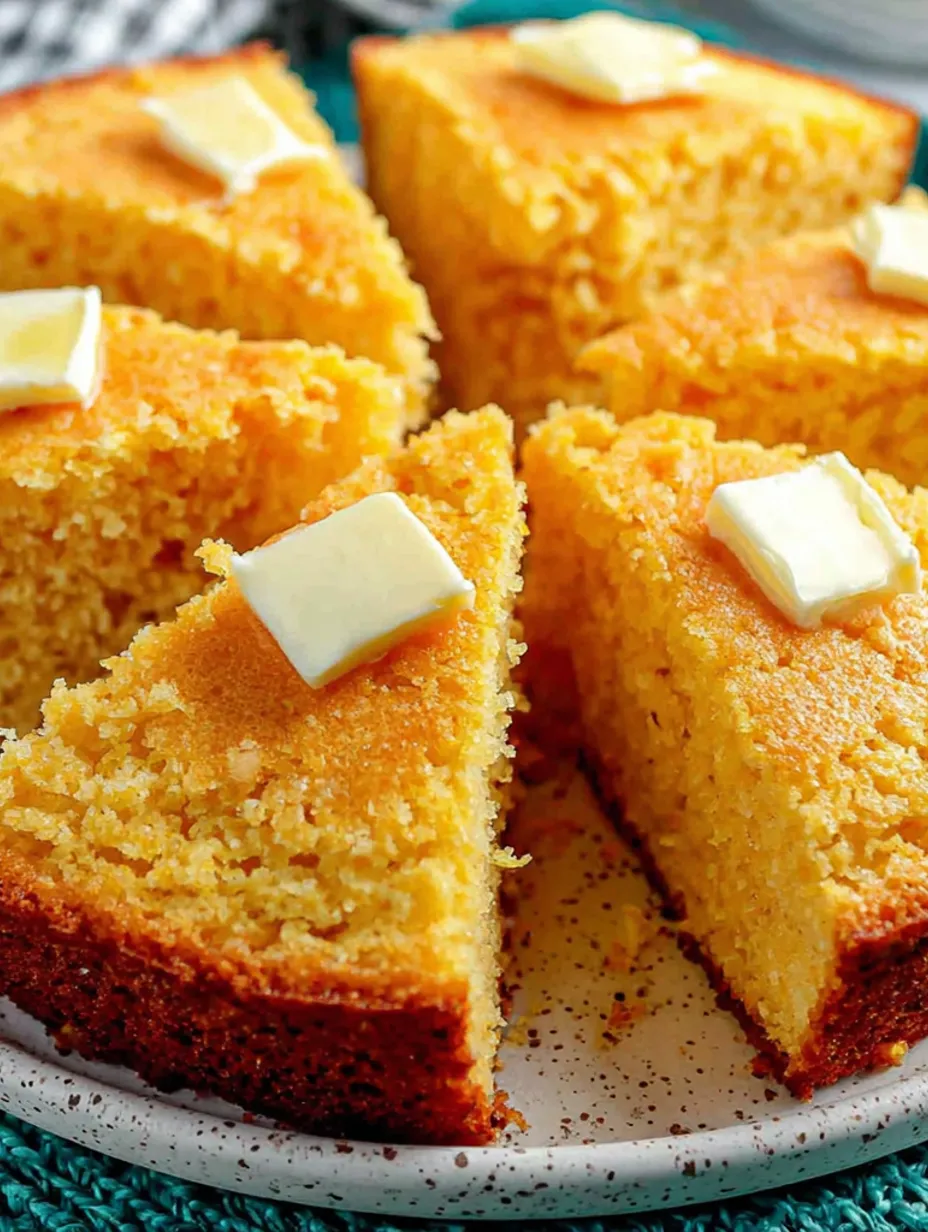 Bookmark
Bookmark
This cornbread has been my family's go to recipe for over three generations, bringing that perfect balance of moistness and light fluffy texture that only buttermilk can deliver. The slightly crisp golden exterior gives way to an incredibly tender crumb that pairs beautifully with everything from weeknight chili to holiday feasts. What makes this recipe special is how the buttermilk reacts with baking soda to create an almost cake like tenderness while maintaining that classic cornbread character.
I still remember the first time I attempted this recipe as a nervous newlywed, worried I'd ruin my grandmother's legacy. The kitchen filled with that unmistakable aroma of baking cornbread, and when I pulled it from the oven with its perfect golden top, I knew I'd captured something special. Now it's requested at every family gathering and has become my signature contribution to potluck dinners.
Ingredients
- 8 tablespoons unsalted butter: provides richness and helps create that coveted golden crust, choose European style for deeper flavor
- 1 cup buttermilk: is the heart of this recipe, providing moisture and the signature tang, always use fresh not powdered
- 1/2 cup granulated sugar: adds just enough sweetness to balance the cornmeal without making it dessert like
- 1 cup yellow cornmeal: coarse ground preferred for authentic texture and that classic cornbread bite
- 1 cup all purpose flour: softens the cornmeal creating a more tender crumb structure
- 1 teaspoon baking soda: the magic ingredient that reacts with buttermilk acidity for perfect lift
- Salt to taste: enhances all flavors, use fine sea salt for even distribution
- 2 large eggs: bind everything together while contributing to the light airy texture
Step by Step Instructions
- Preheat the Oven:
- Set your oven to 375 degrees Fahrenheit and allow it to fully preheat while you prepare the batter. This temperature creates the perfect environment for a golden top without overcooking the interior.
- Combine All Ingredients:
- In a large mixing bowl, add cornmeal, flour, sugar, baking soda, salt, eggs, and buttermilk all at once. Using a wooden spoon or whisk, mix everything together thoroughly until you have a smooth creamy batter with absolutely no lumps. The batter should flow easily but still hold its shape.
- Melt the Butter:
- Place your butter in a 10 inch cast iron skillet or oven safe pan and set it on the stove over medium heat. Watch carefully as the butter melts completely, swirling the pan occasionally to coat the sides. Remove from heat the moment it's fully melted to prevent browning which can add bitter notes.
- Incorporate Butter into Batter:
- Remove the hot skillet from the stove and immediately pour your prepared batter directly into the melted butter. The sizzle you hear is perfect and means you'll get a crispy bottom crust. Gently whisk the batter and butter together until just combined, creating an even golden mixture.
- Bake the Cornbread:
- Slide the skillet into your preheated oven and bake for 25 to 30 minutes. You'll know it's done when the top is beautifully golden brown and springs back lightly when touched. A toothpick inserted in the center should come out with just a few moist crumbs clinging to it.
- Cool and Serve:
- Let the cornbread rest in the skillet for about 5 minutes before cutting. This brief cooling prevents it from crumbling while still serving it at that perfect warm temperature where the butter melts instantly when spread on top.
 Bookmark
Bookmark
Buttermilk truly is the secret ingredient that sets this cornbread apart from all others, creating that signature Southern texture that's both light and substantial. I learned this lesson the hard way when I once substituted regular milk and ended up with dense, flavorless cornbread that even the dog wouldn't touch. One Christmas dinner, this cornbread completely stole the show from the turkey, with guests asking for the recipe before they'd even finished their first slice.
Storage Tips
Store any leftover cornbread tightly wrapped in aluminum foil or placed in an airtight container at room temperature for up to two days. The foil method works particularly well because it maintains moisture while preventing the crust from becoming too soft. For longer storage, wrap individual pieces in plastic wrap and freeze for up to three months. Thaw at room temperature and warm briefly in a 300 degree oven to restore that fresh baked texture and crispy edges.
Ingredient Substitutions
If buttermilk isn't available, create a substitute by adding one tablespoon of fresh lemon juice or white vinegar to one cup of regular milk, then let it sit for 5 minutes before using. The texture won't be quite as tender, but it will still produce good results. When working with cornmeal, coarse ground creates the best texture, but if you only have fine cornmeal available, reduce the flour by 2 tablespoons to prevent the final product from becoming too cake like. Never substitute self rising flour for all purpose flour in this recipe as it will throw off the delicate leavening balance.
Serving Suggestions
This cornbread transforms into the perfect companion for hearty winter soups, smoky chili, or classic Southern dishes like collard greens and black eyed peas. For a simple snack, serve warm wedges with butter and a drizzle of local honey, or try it with pepper jelly for a sweet and spicy combination. It also makes an excellent base for cornbread stuffing during holiday meals, absorbing flavors while maintaining its structure beautifully.
Cultural Context
 Bookmark
Bookmark
Cornbread holds deep cultural significance in Southern American cuisine, representing both resourcefulness and comfort in equal measure. This particular style, leavened with baking soda and enriched with buttermilk, reflects the traditional Southern approach of creating maximum flavor from simple, available ingredients. The cast iron skillet method dates back generations, when these heavy pans were essential kitchen tools that could go from stovetop to oven seamlessly, creating that distinctive crispy crust that defines authentic Southern cornbread.
Frequently Asked Questions About Recipes
- → What type of cornmeal works best?
Coarse ground cornmeal is ideal for texture, adding pleasant graininess without being gritty.
- → Can I replace buttermilk with something else?
Yes, mix regular milk with lemon juice or vinegar as a substitute, though the texture will be slightly different.
- → Why is baking soda the only leavening agent?
Baking soda reacts with buttermilk’s acidity to create lift, keeping the crumb tender and light.
- → How should butter be added?
Butter is melted in a skillet and whisked into the batter, giving a rich flavor and crisp crust.
- → What is the best baking temperature and time?
Bake at 375°F for 25–30 minutes until the crust is golden and a toothpick comes out clean.
- → How can I store leftovers?
Keep tightly wrapped at room temperature for two days, or freeze up to three months for longer storage.
